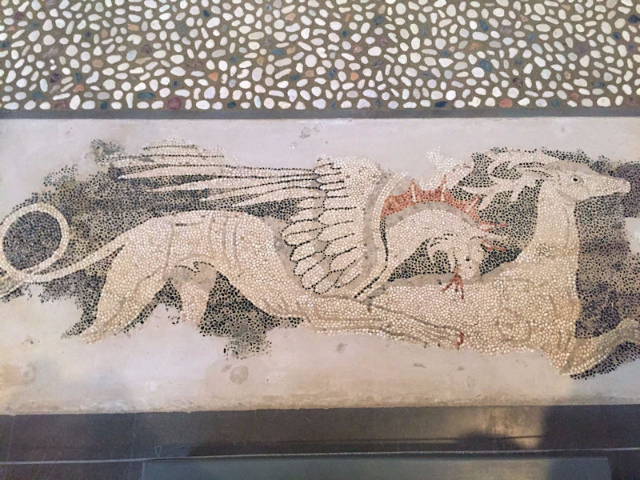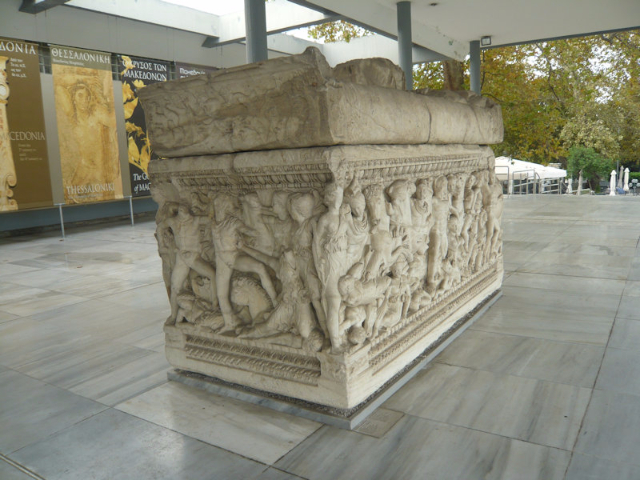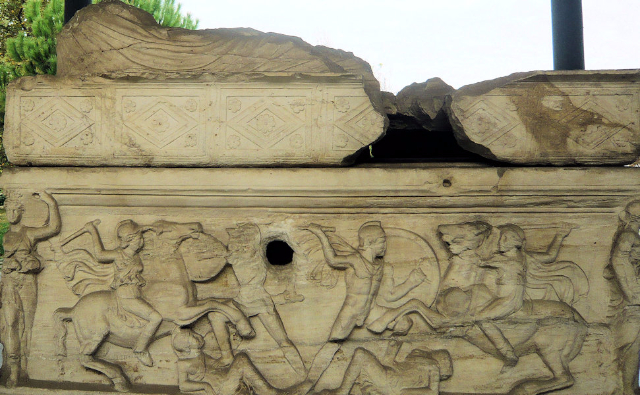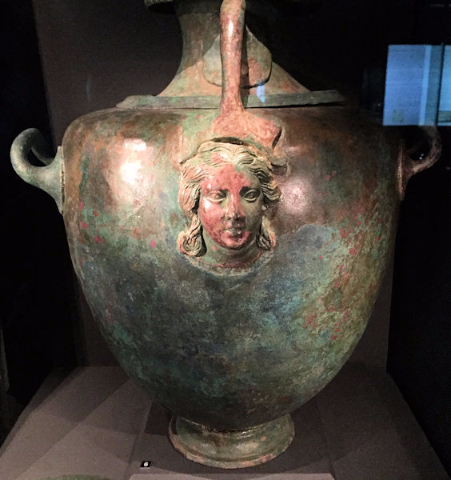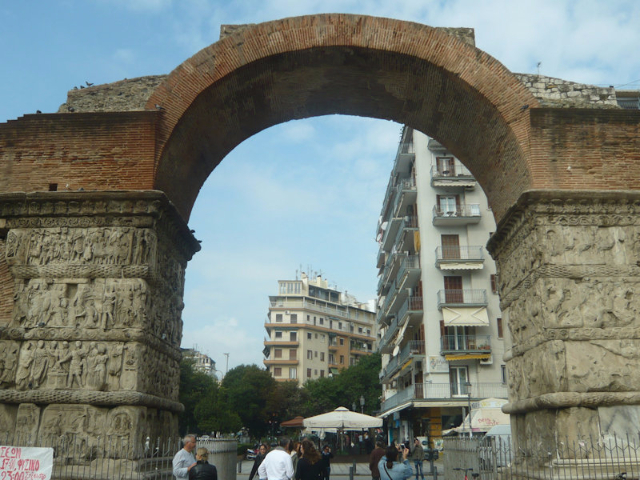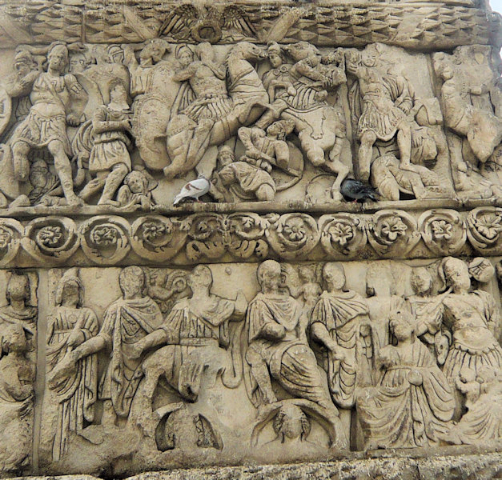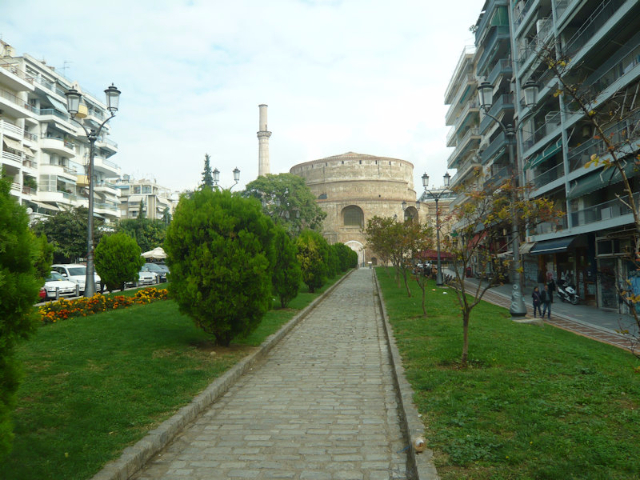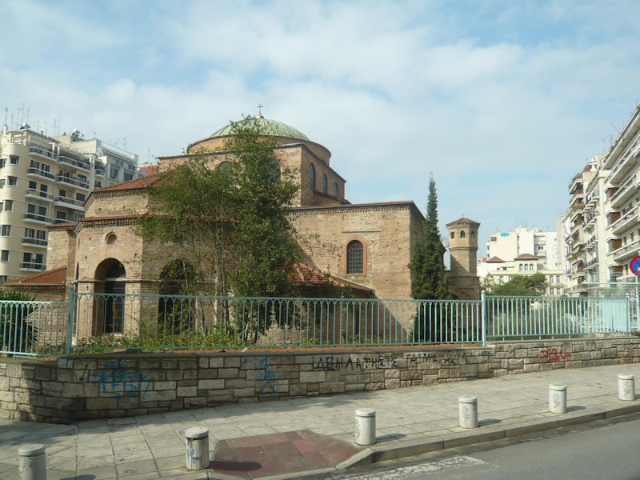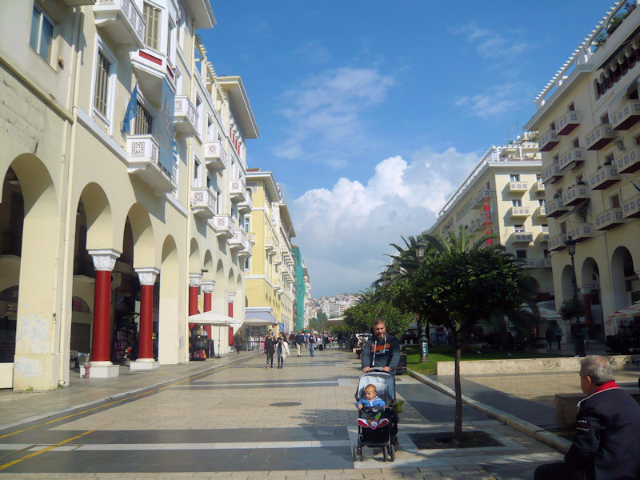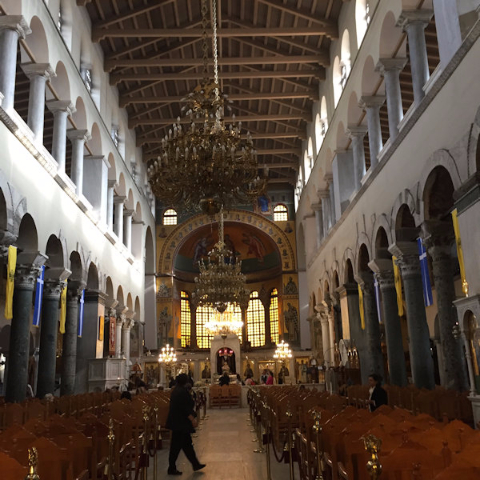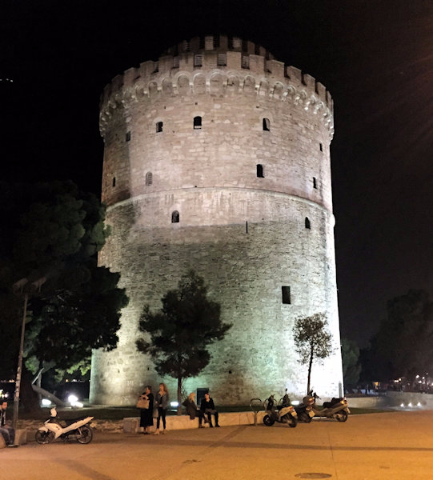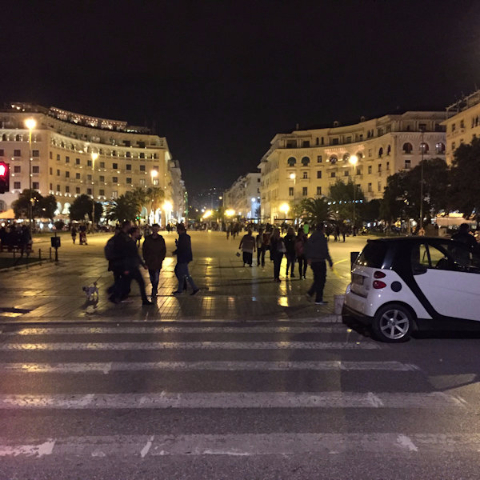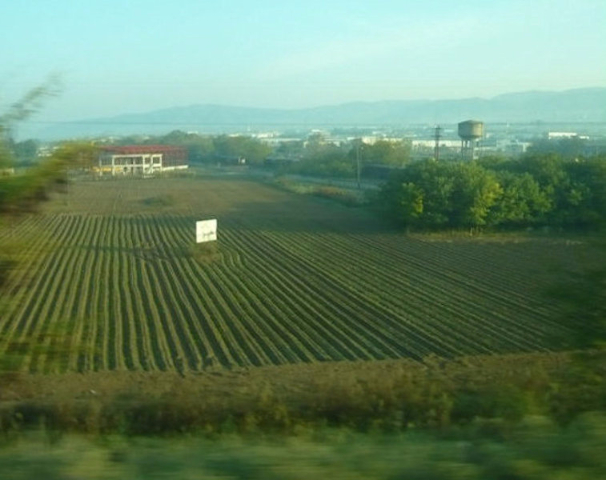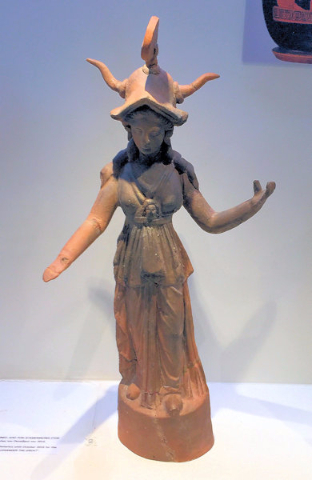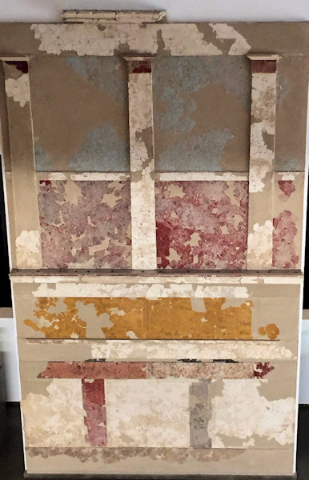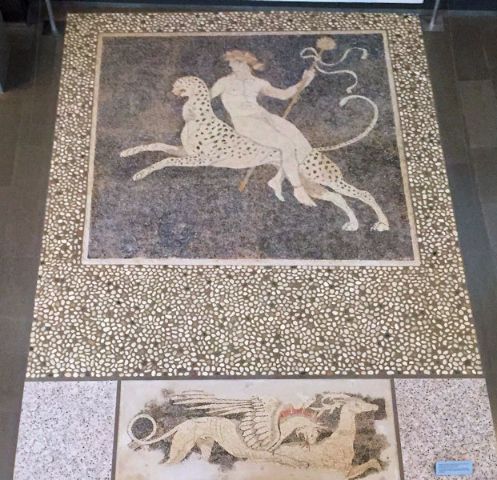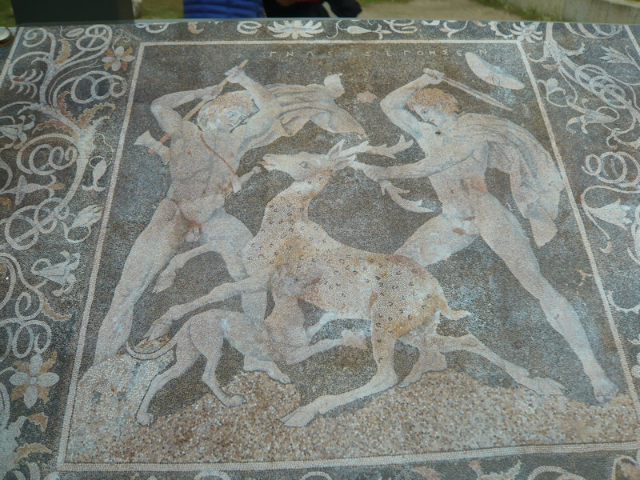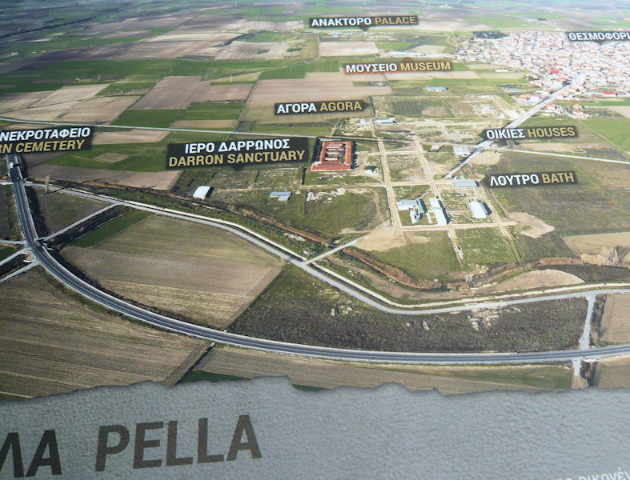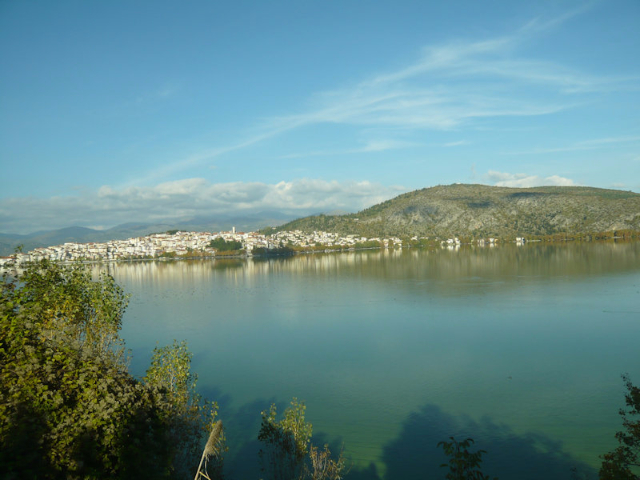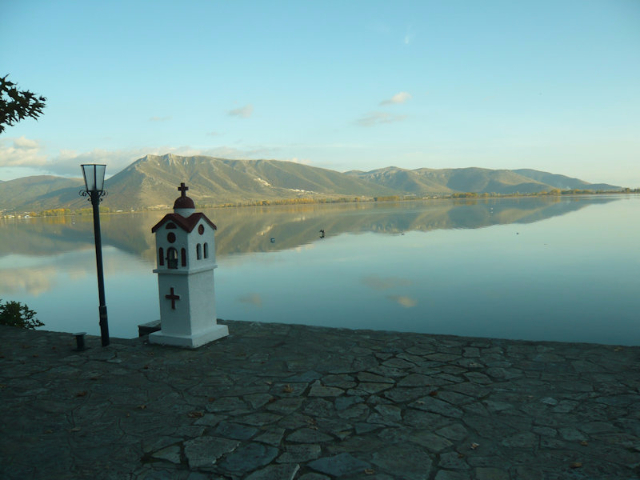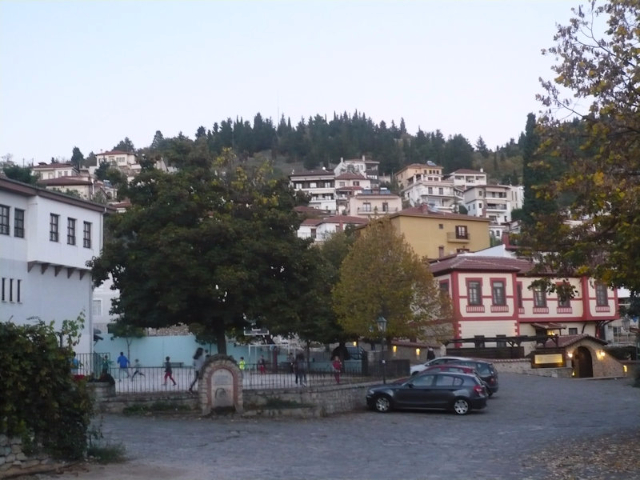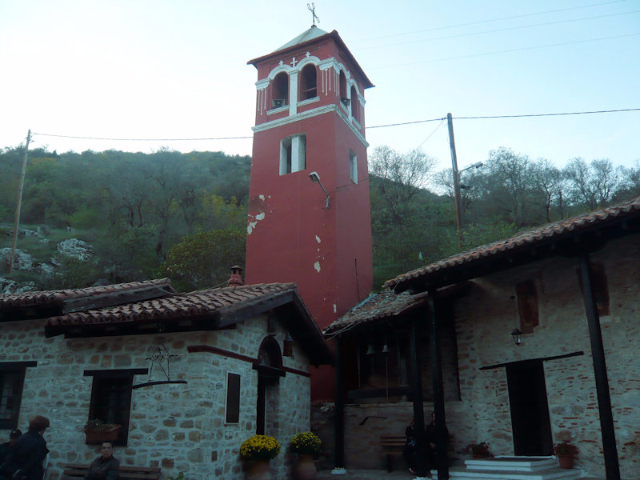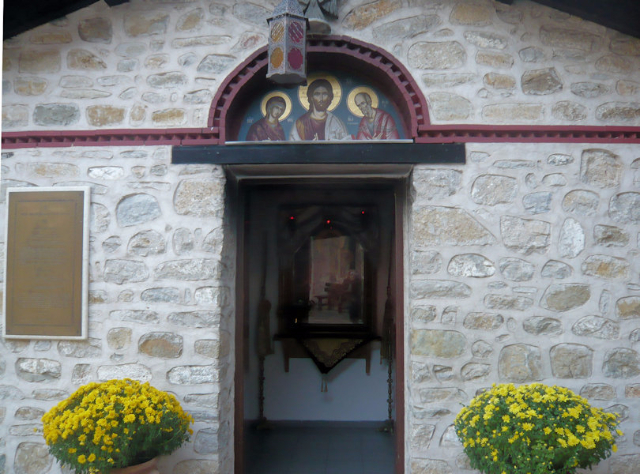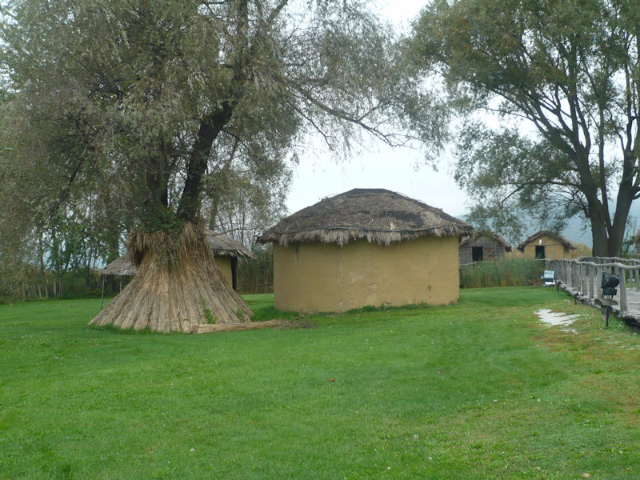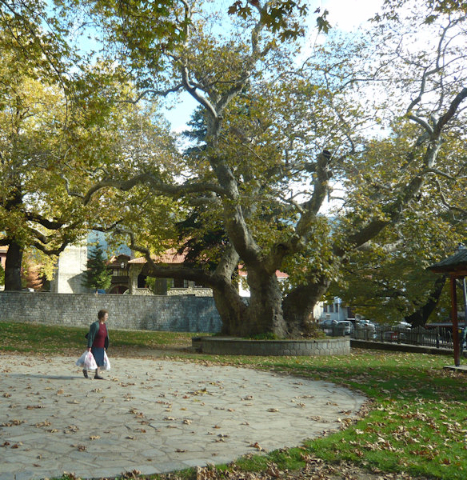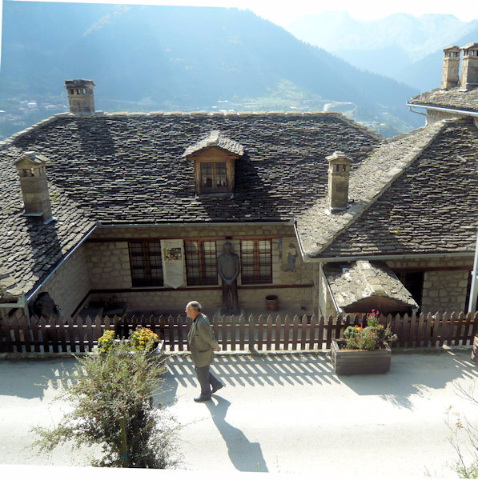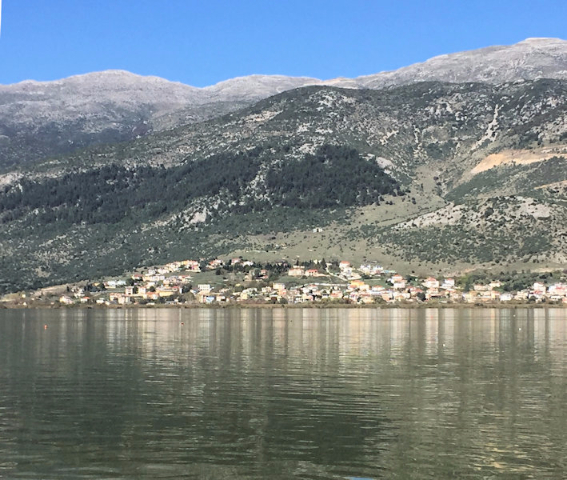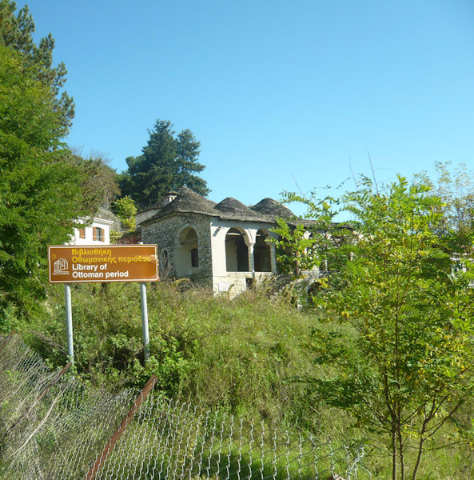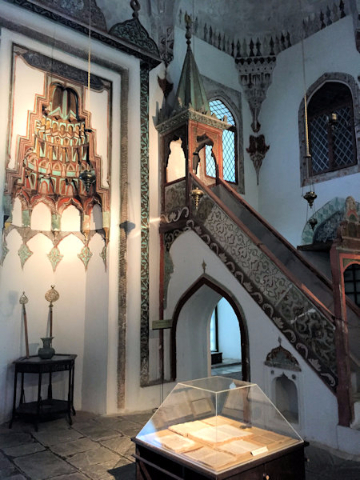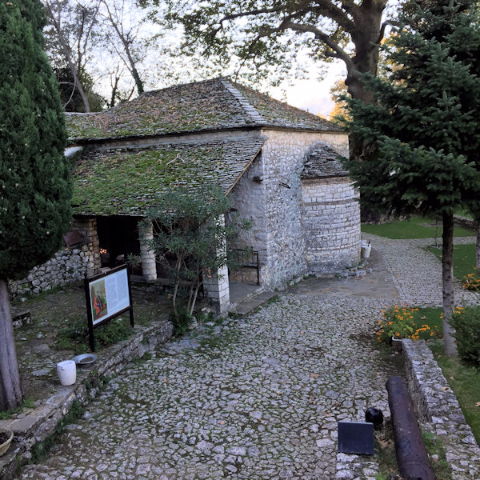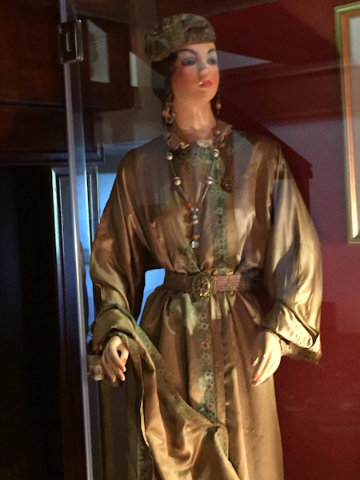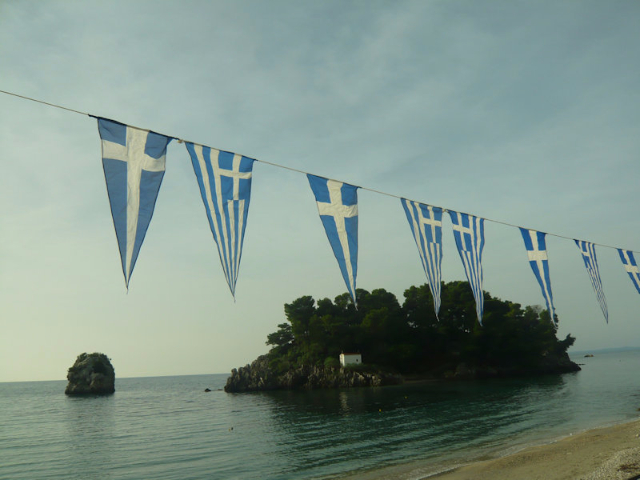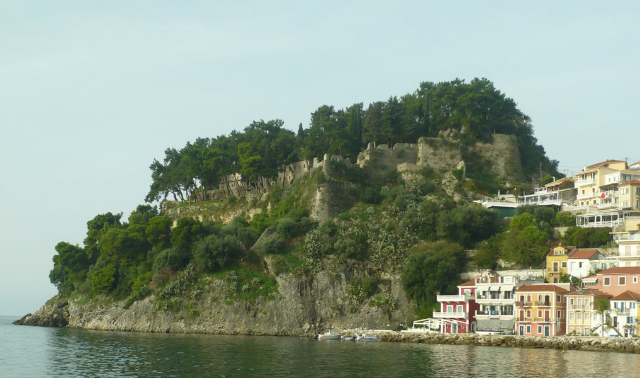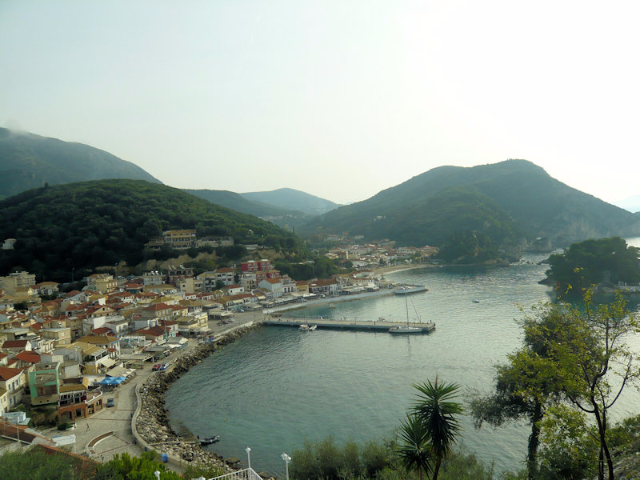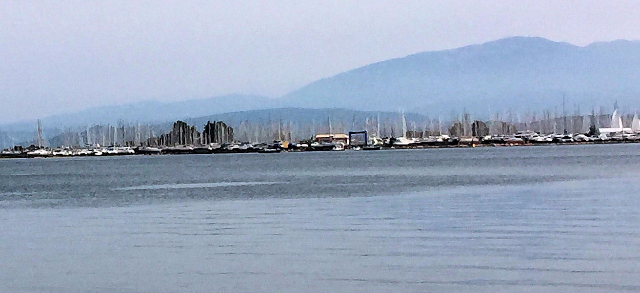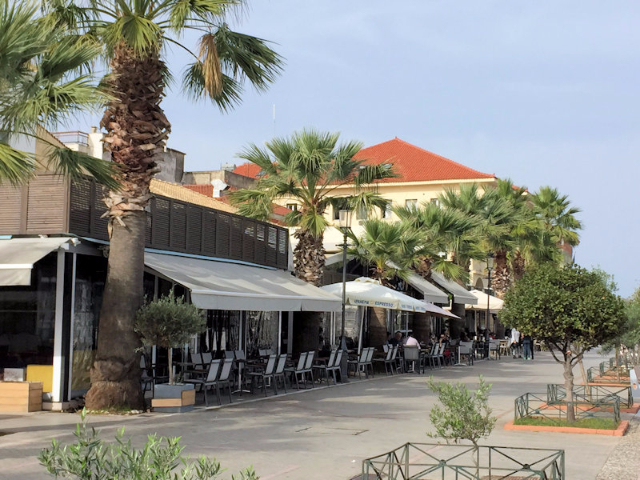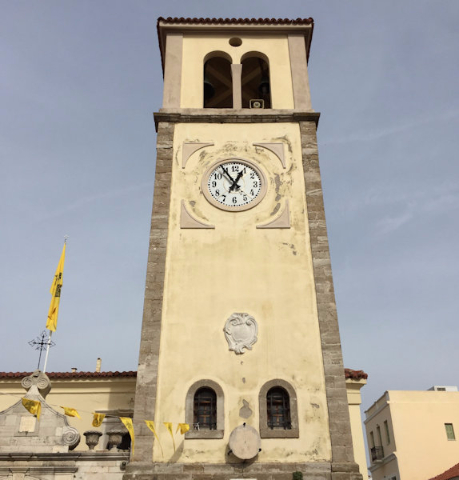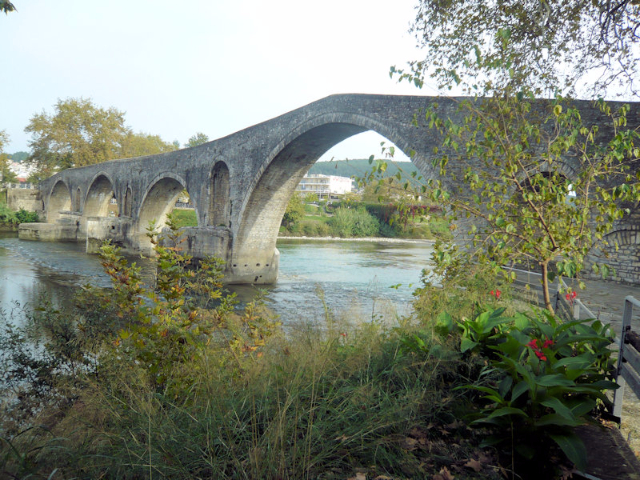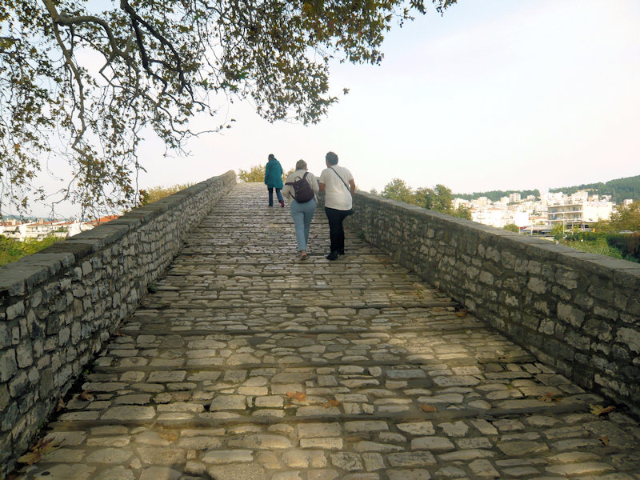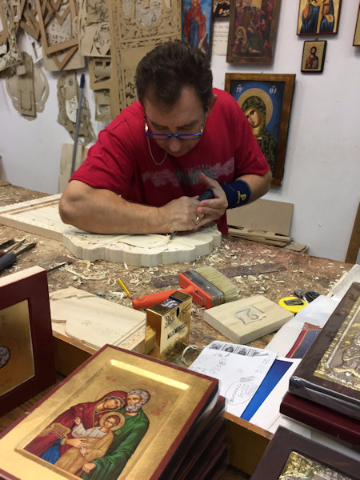Northern Greece: Part One
From the Aegean to the Ionian Sea
By: Zeren Earls - Feb 07, 2017
Early on a Sunday in late October I flew from Istanbul to Thessaloniki, joining a small group of Turkish travelers on a cultural exploration of northern Greece, across Greek Macedonia from the Aegean to the Ionian Sea, on an itinerary prepared by the Turkish tour operator Fest Travel. Following a one-hour flight we landed in Greece’s second largest city, established by King Cassander of Macedonia in 315 BC and named after his wife, Thessaloniki. The ancient city has some of the most important monuments of antiquity and the Byzantine period and was also a religious center for Christianity.
Joined by Ioanna, a local English-speaking guide, we started our excursion right away, beginning at the Archeological Museum of Thessaloniki. A carved marble sarcophagus depicting the Trojan War leads to the entrance of the museum. Housed in a modern building, the museum’s collection has artifacts from prehistoric times all the way through the Roman period from across Macedonia. Of special interest is the “Gold of Macedon” exhibition, with a thematic focus on gold in the ancient world, covering the technology of manufacturing the metal, its uses and its economic impact leading to the growth of Alexander the Great’s Macedonian empire (325?350 BC). On display are gold items excavated from cemeteries, such as jewelry, wreaths, urns, and diadems.
Within walking distance is the Arch of Galerius, built by the eponymous emperor upon his victorious return to Thessaloniki after wars by the Roman army against Persian troops. The arch and a neighboring rotunda are monuments left from a larger palace complex from the early 4th century. The Arch, originally part of an eight-pillar arcade, has three remaining pillars, two of which flank the central passageway and have sculpted marble slabs depicting victorious war scenes.
A road connecting to the rotunda, built as a mausoleum but used as a church, passes through the Arch. Agios Georgios, or the Church of the Rotunda, is crowned by a flat brick dome and supports a minaret, added when the church was converted into a mosque in 1590, following the fall of the city to the Ottomans. The Greeks captured the city during the Balkan Wars in 1912 and reconverted the building into a church, but left the minaret standing. Today the church is a museum.
Agia Sophia (Holy Wisdom) is one of the oldest churches in Thessaloniki. This Byzantine church was erected based on the plan of Agia Sophia in Istanbul, although smaller in scale. Christian icons form the backdrop of the altar, which welcomes the devout on important occasions. At the time of our visit a baby was being baptized, hindering a close view of the church’s interior.
The Church of Saint Demetrius is the basilica, dedicated to the martyr and patron saint of Thessaloniki, Demetrius. Originally built in 313 A D, it has been destroyed by fires several times and rebuilt most recently in 1926-1948. The plain exterior appearance of the city’s largest church belies the majesty of its uplifting interior and the gold mosaics behind the altar.
Thessaloniki is also a major port city with vibrant outdoor life. Musicians entertain passers-by; streets are lined with cafes and restaurants; monuments and fountains are lit at night. After checking into the Grand Palace Hotel, which lived up to its name with its amenities and spacious rooms, we went back out to get a taste of the nightlife.
The White Tower, a circular fortress formerly used as a place of torture and to keep prisoners on death row, has undergone a symbolic cleansing by donning a coat of white paint. Now the city’s signature monument by the harbor, the 22-meter-high tower dwarfs the surrounding trees and pedestrians, silhouetting them against its dramatically lit façade.
The area of Ladadika, a former oil market of shops and warehouses, has recently been renovated as a pedestrian district, with deserted buildings transformed into nightlife hotspots, with cafes, restaurants, clubs and live music tavernas. At 9 pm, the usual dinner hour in Greece, we arrived at one of the renovated buildings, called Palati. The group split into two, between those who wanted dinner with popular music upstairs and those who opted for a quieter ambiance outdoors. Dinner began with a vast array of mezes, ranging from Greek salad and grilled cheese to peppers, zucchini fritters, and tzatziki, followed by grilled sea bream accompanied by rice and potatoes. For dessert we had a sampling of sweets and fruit.
The following morning we left for Kastoria, the capital of the Kastoria region in Western Macedonia. About 40 km. along the way northwest, we stopped by harvested cotton fields at the ancient harbor city of Pella, capital of Macedonia in the late 5th century and home to King Philip II and his son, Alexander the Great. Here we visited the Pella Museum and archeological site.
At the entrance to the exhibit area visitors are greeted by a marble head, an important find considered to be a portrait of Alexander the Great (325-300 BC). Exhibits are organized in thematic groups and range from objects from daily life to goods found in graves. Of special note are floor mosaics from the House of Dionysus depicting the God on a panther or in hunt scenes, plaster dining room wall decorations, and a variety of votive objects from sanctuaries.
The archeological site of Pella, currently undergoing restoration of the excavated areas, indicates a city plan dating to the last quarter of the 4th century BC. It is laid out with rectangular building blocks uniformly separated between roads and stretches over an area extending 2.5 km north-to-south and 1.5 km east-to-west. The roads were paved and surrounded by sidewalks and colonnades, together with fountains, wells, and cisterns in buildings, all testifying to a high standard of living. After we meandered among the ruins of the House of Dionysus, with its Ionic columns and mosaic floors, and viewed the rest of the city plan, siting the Agora, the Sanctuary, and the public baths, we left Pella, which survived the Roman conquest of 168 BC but succumbed to an earthquake in the early first century BC.
Continuing west, we arrived in the city of Vergina, home to the archeological site of the first capital of the Kingdom of Macedonia, Aigai, dating from the early 5th century. The site, a burial ground with more than 300 tumuli, includes the Great Tumulus, housing the Royal Tomb of Philip II and discovered intact by Greek archeologist Manolis Andronikos in 1977. An underground museum displays treasures, such as the marble bed of Philip II, beside the tombs that contained them. Darkness reigns in the state-of-the-art museum, suggestive of the atmosphere in the land of the dead. Many of the funerary objects are protected in glass cases.
In ancient Greece it was customary to have two tombs for each person, who was put on a pyre and set on fire with his or her belongings; the remaining treasures were then buried in the second tomb. If a husband happened to die first, his wife was put on the pyre and burned alive. Aigai is on the UNESCO World Heritage list because if its important transitional role from the classical city-state to the imperial structure of the Hellenistic and Roman periods.
The picturesque town of Kastoria, situated on a promontory on the western shore of Lake Oresteia in a valley surrounded by mountains, was our final destination of the day. This Macedonian town was under Ottoman rule from 1385 to 1912, while at the same time continuing to be the center of Greek orthodoxy. Thus, the town has both Ottoman and Christian cultural treasures. We started our tour a short distance from the lake in the old neighborhood of Doltso, where buildings dating back to the 17th and 18th century are stacked up on a hillside along narrow cobbled streets. We also visited the Byzantine monastery of Panagia Mavriotissa, which has frescos on both the outer and inner walls of the building in addition to treasured icons indoors, such as that of the Prophet Elijah, dating from the 12th century. Some of the frescos depict saints with hollowed eyes, removed during the Ottoman rule.
An open-air museum in the village of Dispillo near Kastoria recreates the life of lake-dwellers, based on clues from excavations conducted by the University of Macedonia. This prehistoric lake settlement, the oldest excavated city in Europe, looks back to a time around 5500 BC, showing how early dwellings were made of sticks leaned against a tree trunk, which anchored them like a teepee, gradually giving way to round huts with thatched roofs. Replicas of huts in the marshland depict scenes from the inhabitants’ home life, such as cooking in clay pots over a wood fire.
The road from Kastoria to Ioannina bends around scenic mountains sprinkled with villages. One such village where we stopped was Metsovo, which cascaded down the mountain at about 3500 feet above sea level. Stone houses with gray slate roofs and wooden balconies lined the steep serpentine alleys. Old men in caps and supporting canes socialized on a bench in front of the local bank near the village square, dominated by a gigantic plane tree.
Continuing on mountain roads, we arrived in Ioannina, situated along the northern shore of Lake Pamvotis, which is fed by streams. Recent excavations date the early fortifications of the old town, known as the Castle-City, to the Hellenistic period of the 4th-3rd century BC. Later constructions were added to the fortress during the Byzantine and Ottoman periods, the latter extending from 1430 until the city’s liberation in 1913. Ioannina reached the height of its pre?eminence under the Ottoman vizier Ali Pasha, reaching beyond its fortifications until the vizier’s downfall and execution in 1822.
The castle complex includes the Ali Pasha Mosque (1618), which is close to an Ottoman bath and a library, attached to a madrassah, as well as cavalry barracks. Today the mosque is the Municipal Museum of Ioannina. Exhibits are divided into three sections, depending on the community Christian, Jewish, or Muslim to which they belonged. All three communities used to live together in unity inside the fortress. The respective exhibits include textiles, traditional clothing, and objects for domestic use, with the Muslim section occupying the main part of the mosque. The panoramic view of the city and the lake below is worth the climb.
Greece has excellent infrastructure with good roads. We traveled from Ioannina across mountain terrain, through long tunnels and sometimes fog, descending in Parga, across from the island of Corfu on the Ionian Sea. Parga, a resort town which uniquely combines mountain and sea, curves around the shore like an amphitheater. The remnants of a fortress, built in 1401, still sit on a hill, although it changed hands several times throughout history. Climbing about 100 steps, we reached the castle to take in a spectacular view of the shoreline below and returned via a stepped road, enlivened by stray cats and old houses with street-level stores.
Traveling south along the coastline, studded with beaches, we reached Preveza at the northern end of the Arta Gulf an hour later. A harbor city with a long history, Preveza was the subject of sea wars between the Venetians, the French and the Ottomans, who ruled it for over a century, and was liberated during the first Balkan War in 1912. Now a modern city and home to leisure boats, it is a center for tourism and commerce. Produce grown inland, such as olives, fruit, and vegetables, along with dairy products and wool, arrive here for export. Following a city tour by foot, which included the landmark Venetian clock tower and a promenade on the boardwalk, we left for Arta at the other end of the Gulf.
Arta, situated on the left bank of the Arachthos River, is an ancient town dating from 294 BC. Like many others in the region it has a rich history, having been captured by the Byzantine and Roman empires, the Serbs, the Albanians, the Venetians, and the Ottomans, and finally gaining independence in 1881. It was annexed to the Kingdom of Greece in 1913. Among the historic landmarks are a Byzantine castle and a medieval stone bridge across the Arachthos River. The bridge’s uneven stone path accommodates only pedestrians, with a parallel second bridge handling vehicular traffic. The town sits on fertile land with citrus orchards and is home to cotton and wool industries, as well as handicrafts. Outside the city are several ornate 13th-14th-century churches. We visited an icon workshop, where we watched craftsmen carve images into wood panels before applying gold-leaf.
Afterwards we returned to Ioannina for the night, looking forward to our journey back to the Aegean coast along a different path of cultural and natural treasures starting the following day.
(To be continued)

